This wiki is no longer being updated as of December 10, 2025.
|
SSIS:Global Verify Tutorial
← SSIS:Data Quality Components
| Global Verify Navigation | |||||||
|---|---|---|---|---|---|---|---|
| Overview | |||||||
| Tutorial | |||||||
| |||||||
| |||||||
|
The following steps will guide you in the basic usage of Global Verify for SSIS.
Advanced Configuration
In the Global Verify Component, navigate to File > Advanced Configuration.
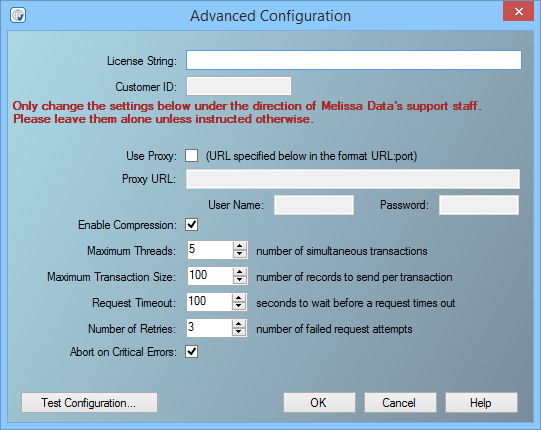
Set up the Global Verify Advanced Configuration. See Advanced Configuration.
Add Component
To add the Global Verify Component to your project, drag the component onto the Data Flow screen. This will snap the Global Verify Component into your workflow space.
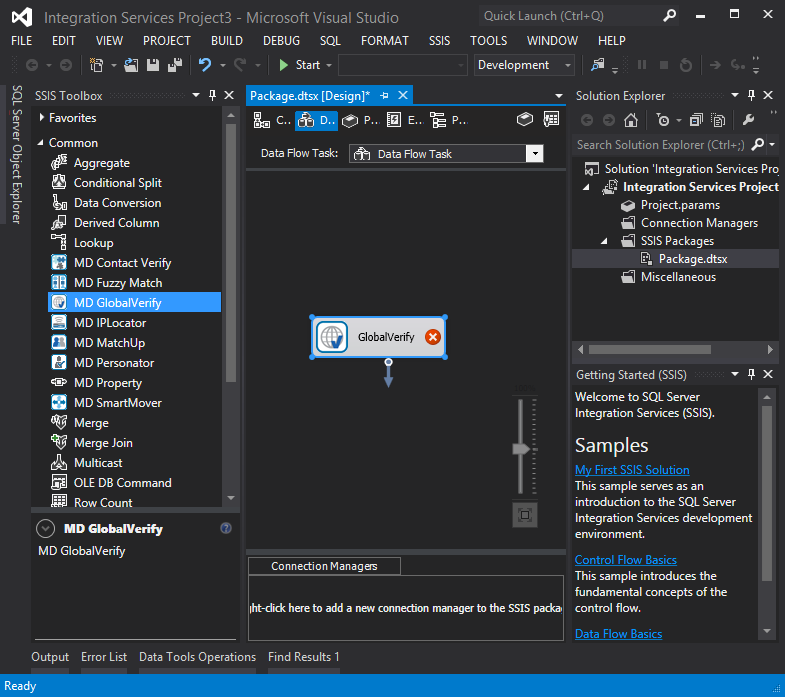
Connect Input
Select a data flow source to be your input data. Many formats can be used as Sources, including Excel files, flat files or Access Input data sources. Connect this data source to the Global Verify Component by dragging the arrow from your data flow source to the Global Verify Component.
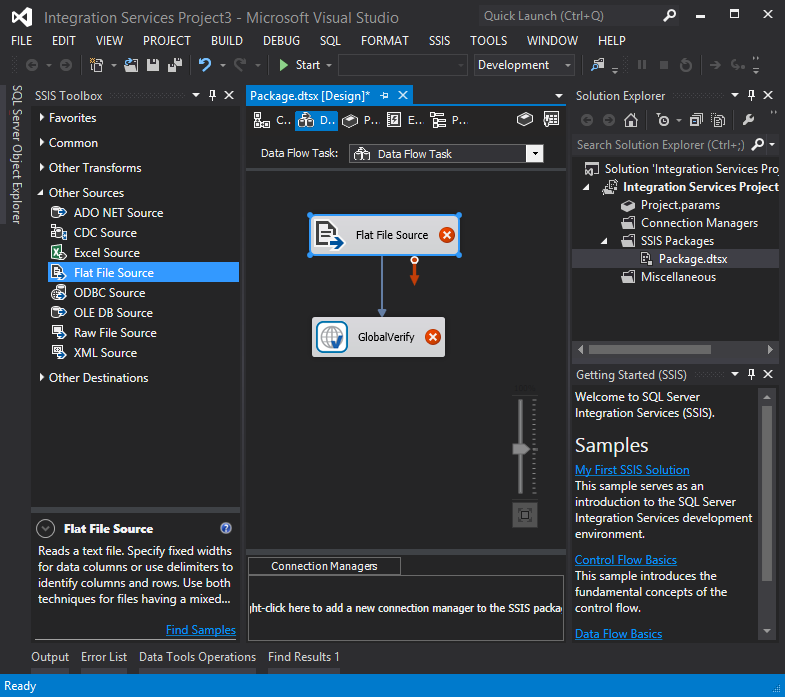
Configure Component
Double click the Global Verify Component to bring up the interface.
Name Tab
Map the input name fields.
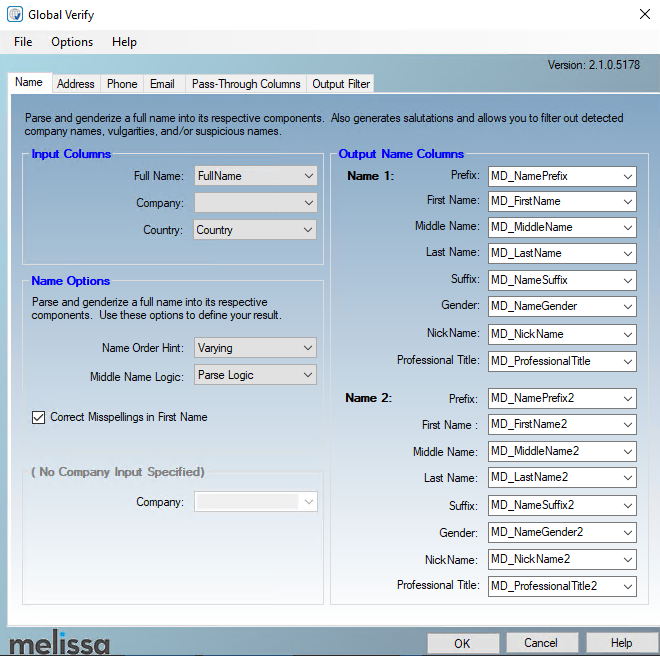
Address Tab
Map the address input fields and continue to the next page of the Address tab.
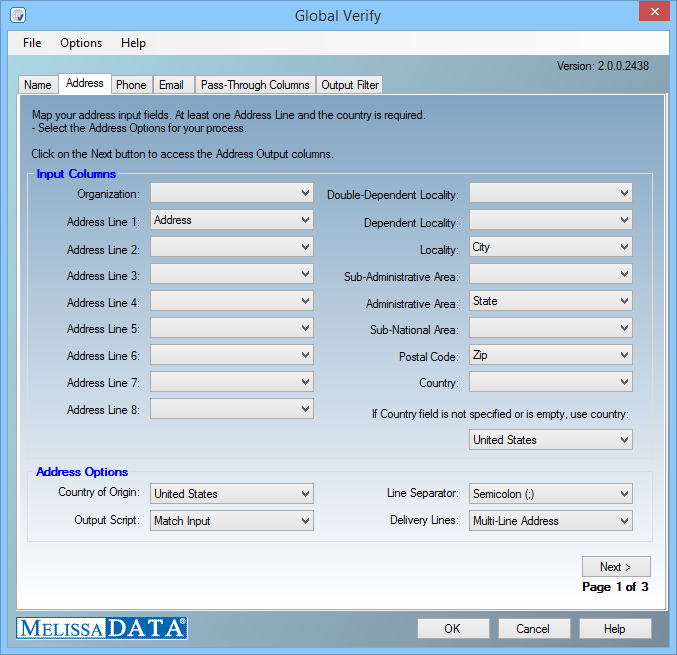
Map the address output fields. If you want additional address output fields, continue to the next page of the Address tab.
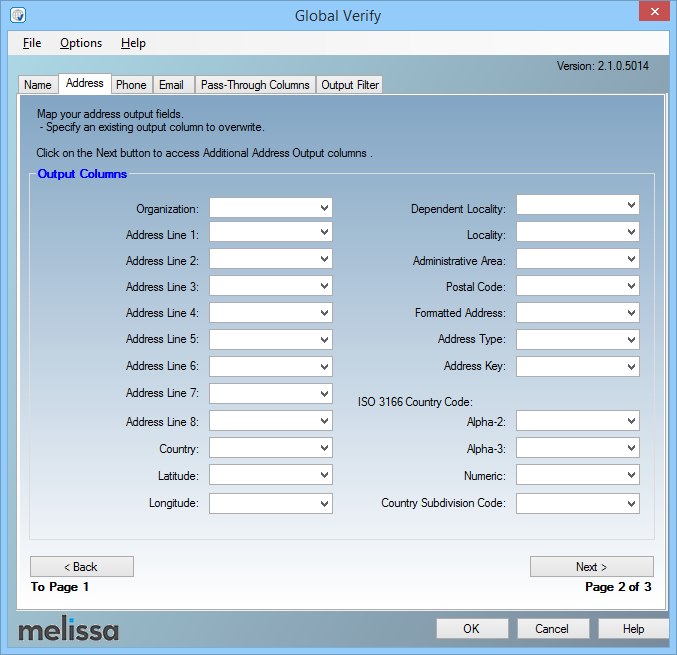
Map the additional address output fields.
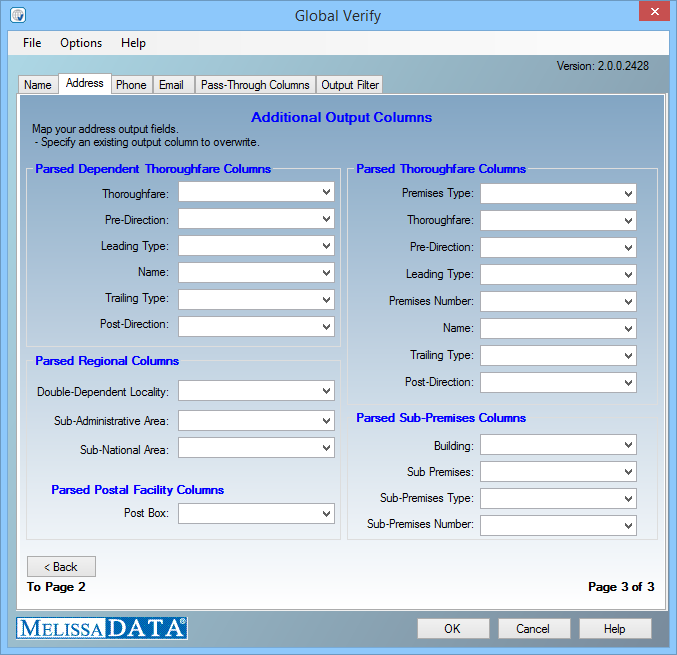
Phone Tab
If you have an input phone field, specify it and the country.
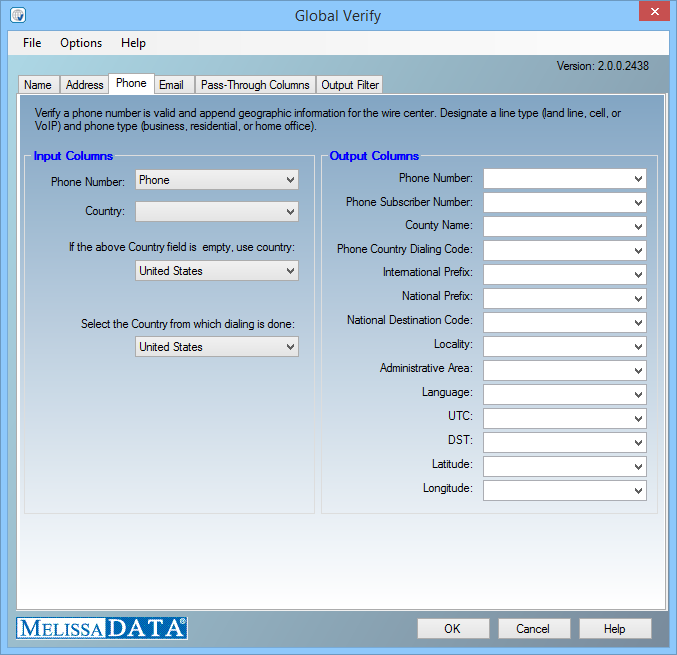
Email Tab
If you have an input email address field, specify it here and choose your email verify options.
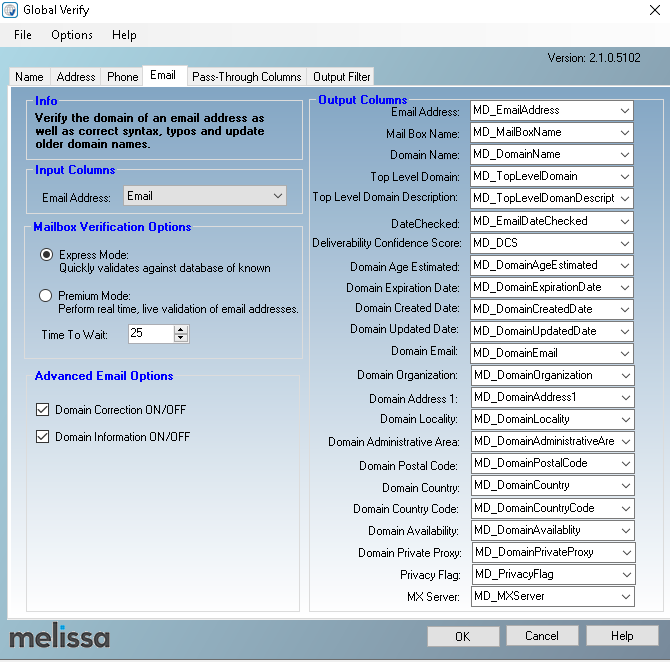
Pass-Through Columns Tab
You may choose which fields to pass through to the data file and which fields to filter out.
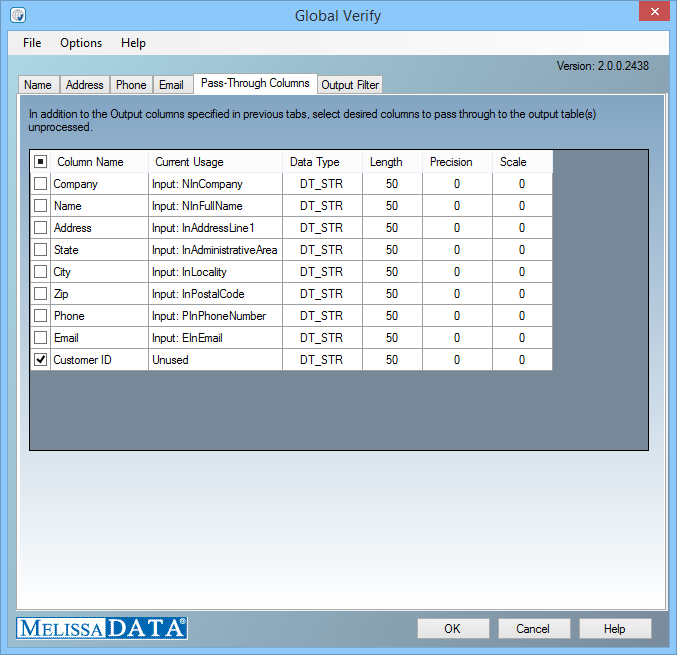
Output Filter Tab
You can specify the filter from the drop down or you can also create your own custom filter.
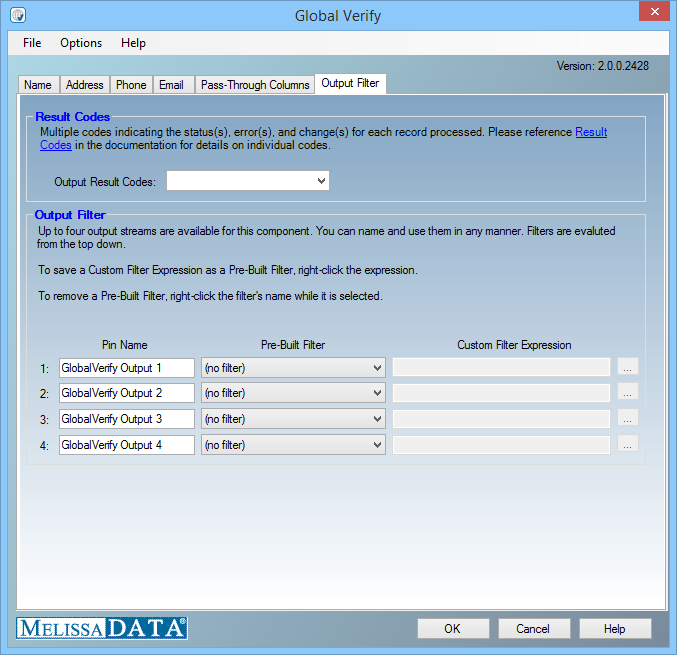
Connect Output
Add data destinations for downstream output. Connect the respective output filter pin to the output destination.
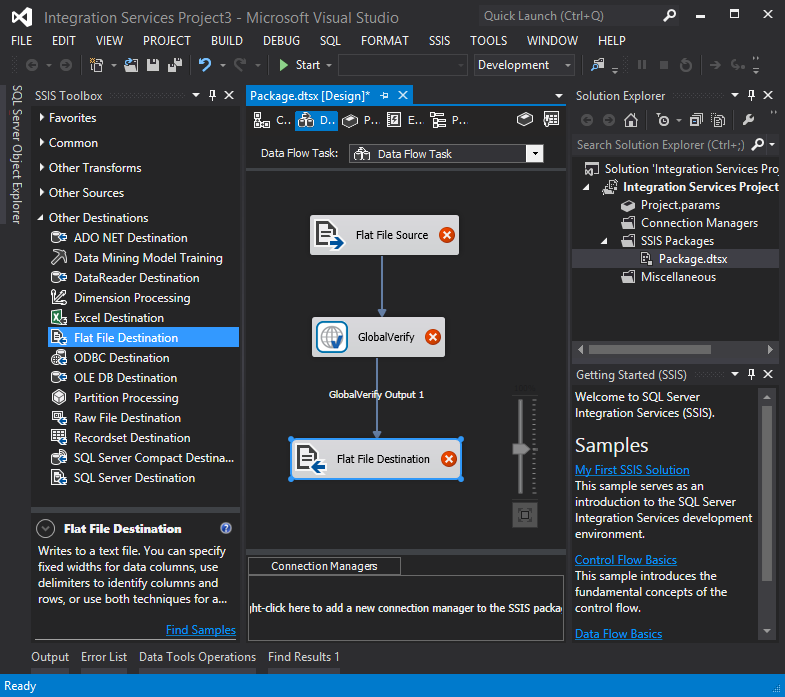
Save Settings
Click File and select Save Selected Items to save the project
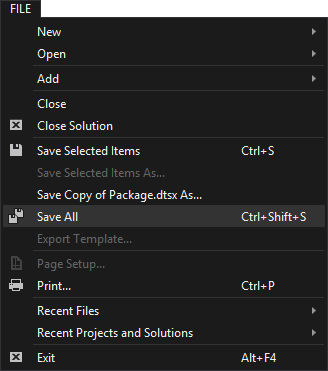
Run Project
Now, the project is ready to run.